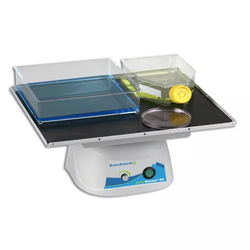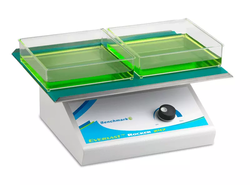Rockers/Rollers
For laboratory mixing that needs a gentle touch--such as staining, de-staining, washing, blotting, and cell cultures--the complete line of Next Day Science benchtop rockers and rollers will get the job done right. Products include both 2D rockers (a seesaw motion that creates waves in liquid samples) and 3D rockers (a gyrating motion to create a gentle swirling of samples), as well as variable speeds and tilt angles, and rubber pads to prevent slippage.
Next Day Science also carries tube rollers and blot mixes from leading industry manufacturers.
Please see the
Features and Specifications of each product for further information.
15 product(s) found
Rockers/Rollers Questions & Answers
What is a rocker/roller?
A rocker is a lab instrument used for biological and molecular mixing applications. The device itself is small, and so it is often designed to accept stackable platforms or may even be equipped with multiple tiers. Rockers are often used for staining and destaining gels after hybridization, electrophoresis, washing, gentle mixing, blotting, and film development.
How does a rocker/roller work?
There are two types of rockers available - 2D and 3D. Two-dimensional rockers use a platform that creates a linear wave effect in fluid samples by moving in a motion similar to that of a seesaw. While three-dimensional rockers use a platform that moves in a gyratory motion to generate waves that move in a circular motion from corner to corner.
When should I use a 2D rocker/roller over a 3D model?
Both motions can be used for similar applications, but 3D rockers tend to be more capable of stronger agitation when required. Both types typically feature variable tilt angles and speeds that allow you to adjust to it your application.
Should I use a rocker/roller or a shaker?
Laboratory rockers operate at lower speeds than a shaker and are thus used for applications that need a gentle, rocking motion. Rockers are primarily used when one needs to control how a solution moves over a media. For example, one would use a rocker instead of a shaker when gel staining, as the wave effect of a rocker ensures the staining agent penetrates all pores evenly.
What should someone consider when selecting a rocker/roller?
Important factors to consider include the type of motion you need for your specific application, the orbit/tilt and speed you need, and the space available to place it. It is recommended to choose a rocker with adjustable speed and tilt control so that the unit can be used for multiple applications. If you are only using the instrument for one purpose, like blotting, you will save a lot of money by selecting a rocker with a fixed speed and angle optimized for blotting.













